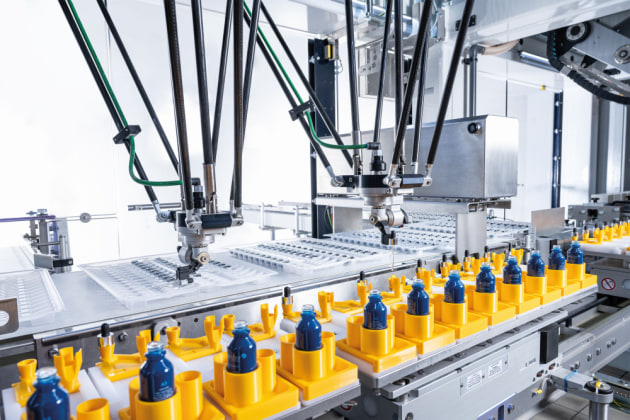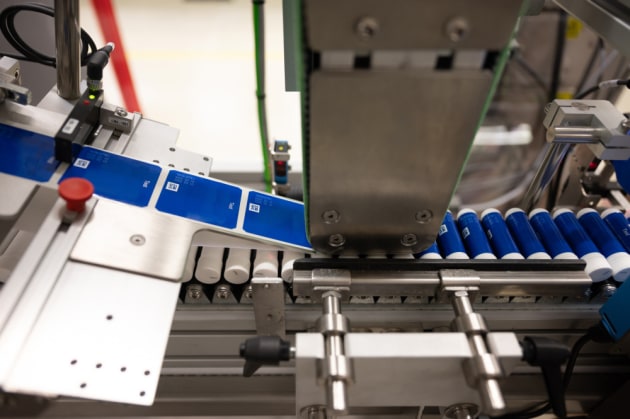Consumer demand for ‘natural’, sustainably packaged cosmetic beauty and personal care products is growing, and manufacturers are adapting their material and machinery choices. Ahead of Interpack, we look at some solutions that will be on show.
As sustainability stays in the consumer spotlight, manufacturers are making new material choices for their packaging, shifting to monomaterials that can be recycled, and materials that are paper-based or from other renewable sources.

For example, Interpack exhibitor Stora Enso has developed a novel composite paper for cosmetic tube packaging. The composite paper is coated with an EVOH barrier, which until now has only been common for cardboard cartons for beverages. The tubes can be decorated with high quality digital printing, as advanced software now makes unlimited design variations possible, enabling each tube to become a unique piece of art.
Energy efficient filling
The growing number of individual formats as well as a multitude of new cosmetic products create new requirements for filling. Mechanical engineering company Rationator specialises in modular filling lines and, for example, combines its Robomat filling line with a Robocap closing machine, to automatically mount widely different closures such as screw caps, push caps or spray and dosing pumps, on filled bottles of cosmetics. This new generation of machines also focuses on sustainability and efficient use of energy.
The Marchesini Group, too, is seeing a growing proportion of its turnover coming from the cosmetics sector. The group’s Beauty Division is now able to cover the entire production cycle of a cosmetic product with its machines. New models also wrap cosmetic products in environmentally friendly materials, for example machines for boxing products in cardboard trays, or thermoforming and blister wrap machines for producing blisters and trays from PLA or rPET, or stickpack lines using 100 per cent recyclable plastic monomaterials.
Flexibility is in demand. Schubert Cosmetics therefore has recently developed a monoblock bottle filling system for a cosmetics manufacturer, which covers a wide range of shapes. The respective portfolio currently covers eleven different filling media with widely different viscosities, which must be filled into five plastic and two glass bottle shapes. A single shape can again contain up to three single components, like bottle, pump and sealed lid.

The new system integrates the entire filling and packaging procedure into a single line. In directly following steps, plastic and glass bottles are cleaned, precisely filled, sealed with a lid and packaged in pre-glued automatic side load folding boxes.
The high requirements regarding completeness and intactness of the products and their packaging are met through the installation of several camera systems that inspect the products at various points in the process and discard them as needed, without interrupting the packaging process.
The basis of this especially easy and cost-attractive format change is 3D printing by the Schubert platform “Partbox”. This allows manufacturers of cosmetics to produce their own spare or new format parts. With few exceptions, this way all changeable parts are able to be easily reproduced. This includes, for example, grippers for pipettes as well as trays for the containers.

Handling small items
Packaging for cosmetics can be really small and challenging to handle. Lip balm sticks, for example, don’t offer much surface area, but need declarations nevertheless. Handling these small products for optimum alignment while the declarations are being printed can quickly become a challenge.

Declaration specialist Bluhm Systeme has therefore developed a specialised system for labelling and printing very small cosmetics products. Its new Geset 700 labelling system consists of a label dispenser, a laser marker and related conveying technology. Up to 150 cylindrical cosmetic products per minute are labelled by the system, using preprinted labels and individual batch numbers.
The new system reliably transports the small cylindrical products throughout the entire marking process: a vibration belt moves the upright sticks to a product turner, which turns them by 90 degrees using a spiral. In the prone position, the products pass over so-called prism rollers, which transport them through the system at a predefined distance from each other. To ensure traceability, the lip balm sticks must receive individualised batch information. A laser marker adds these data to the labels before these are issued by the dispenser. For safety reasons, a camera then immediately validates the printed information.
What is going on in the cosmetics industry and which sustainable solutions the sector has ready, is waiting for visitors to discover at the world’s biggest trade fair for processing and packaging in Düsseldorf. From 4 to 10 May, 2023, in halls 15, 16 and 17, exhibitors at Interpack will present developments in filling and packaging of cosmetics and personal care products.
This article was first published in the March-April print edition of PKN Packaging News, page 32.






